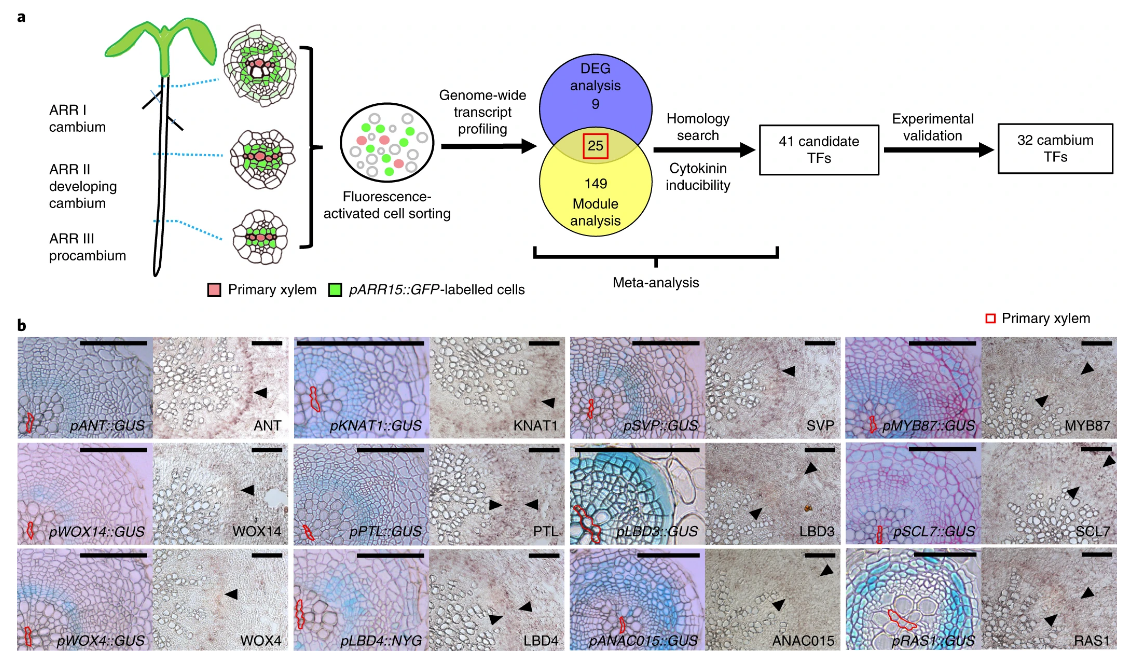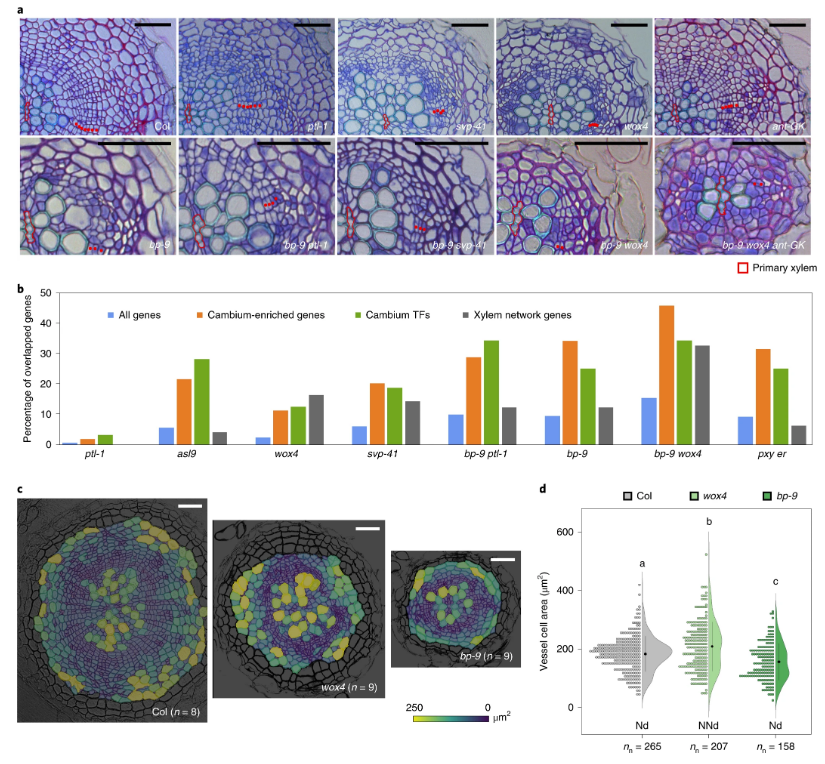A comprehensive analysis of the transcription factors (TF) that play in the vascular cambium has boosted our understanding of the underlying transcriptional regulation in this important plant meristem through the discovery of 32 cambium TFs.
The work provides a significant new resource of genetic tools and data to advance further research in radial shoot and root growth in plants, with particular benefits to researchers looking at ways to increase woody biomass.
An international collaboration, including plant scientists from Ykä Helariutta and Sebastian E. Ahnert research teams at the Sainsbury Laboratory Cambridge University (SLCU), identified a large set of TFs on the regulation of cambium stem cells from where the woody tissue is born.
First author of the research published in Nature Plants, Jing Zhang, said using multidisciplinary approaches to explore the genetic regulation of radial plant growth in Arabidopsis thaliana had significantly increased our knowledge of this little understood meristem. Dr Zhang said: “Although a few TFs have been shown to regulate cambial activity, the phenotypes of the corresponding loss-of-function mutants are relatively modest, highlighting our limited understanding of the underlying transcriptional regulation. We used cambium cell-specific transcript profiling followed by a combination of network and genetic analyses to identify 62 new TF genotypes, among the analysed near 100 genotypes, displaying an array of cambial phenotypes.”

The researchers found that by modulating the activity of multiple TF genes, they could see distinct phenotypes that affected cambial stem cell activity or wood formation. This included the virtual loss of cambial activity in certain mutants that in effect unlocks the genetic redundancy in the regulation of cambium development. They also identified TFs with dual functions in cambial cell proliferation and xylem differentiation, including WUSCHEL-RELATED HOMEOBOX 4 (WOX4), SHORT VEGETATIVE PHASE (SVP) and PETAL LOSS (PTL).
The team engineered Arabidopsis for enhanced radial growth by combining overexpression of the cambial activator WOX4 with removal of the putative inhibitor PTL. “This line also showed ectopic cambial activity, thus further highlighting the central roles of WOX4 and PTL in cambium development.” The authors speculated that such genetic tools could be translated to woody species and crops for increased biomass.

Read Thomas Greb’s review Genetic space of radial plant growth.
Reference
Jing Zhang, Gugan Eswaran, Juan Alonso-Serra, Melis Kucukoglu,Jiale Xiang, Weibing Yang, Annakaisa Elo, Kaisa Nieminen, Teddy Damén, Je-Gun Joung, Jae-Young Yun, Jung-Hun Lee, Laura Ragni, Pierre B. de Reuille, Sebastian E. Ahnert, Ji-Young Lee, Ari Pekka Mähönen and Ykä Helariutta. (2019) Transcriptional regulatory framework for vascular cambium development in Arabidopsis roots. Nature Plants DOI: 10.1038/s41477-019-0522-9
Funding
This work was supported by Finnish Centre of Excellence in Molecular Biology of Primary Producers (Academy of Finland CoE program 2014-2019) decision #271832, the Gatsby Foundation (GAT3395/PR3)), the University of Helsinki (award 799992091) and the European Research Council Advanced Investigator Grant SYMDEV (No. 323052) to Ykä Helariutta; Academy of Finland (grants #132376, #266431, #271832), University of Helsinki HiLIFE fellowship to A Pekka Mähönen; National Research Foundation of Korea (2018R1A5A1023599 and 2016R1A2B2015258) to Ji-Young Lee.





